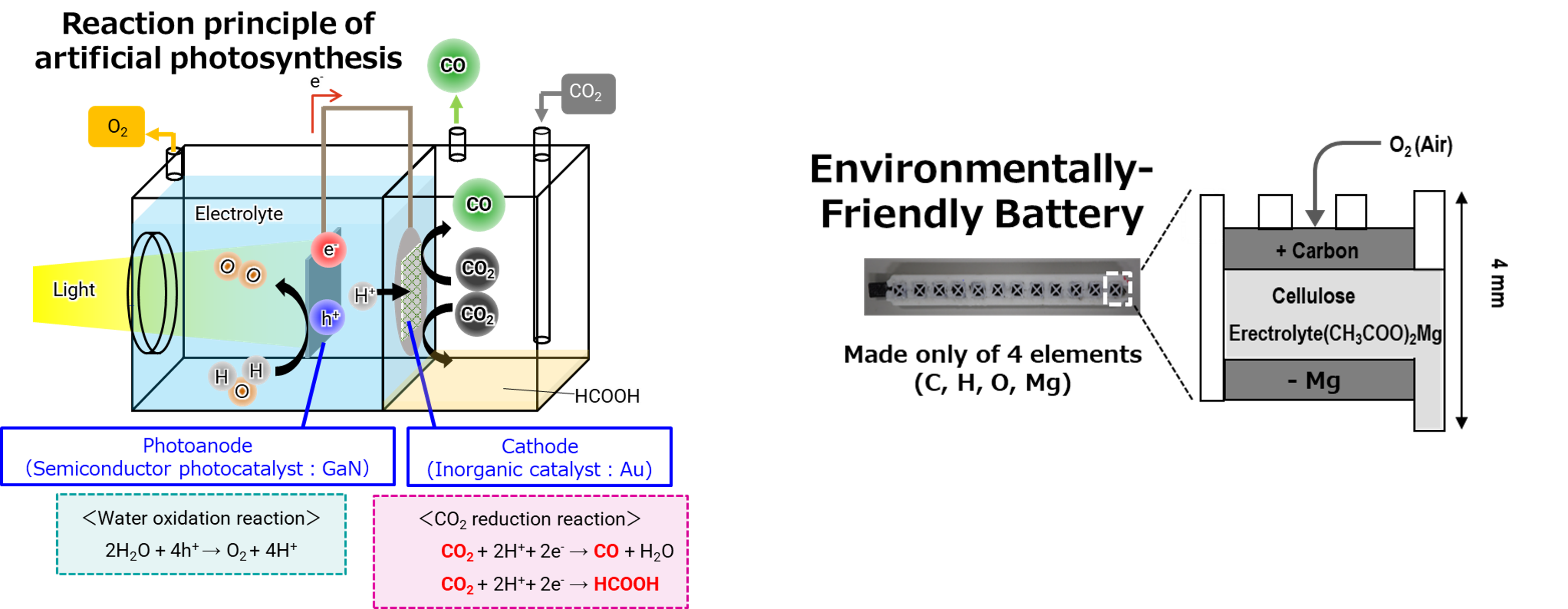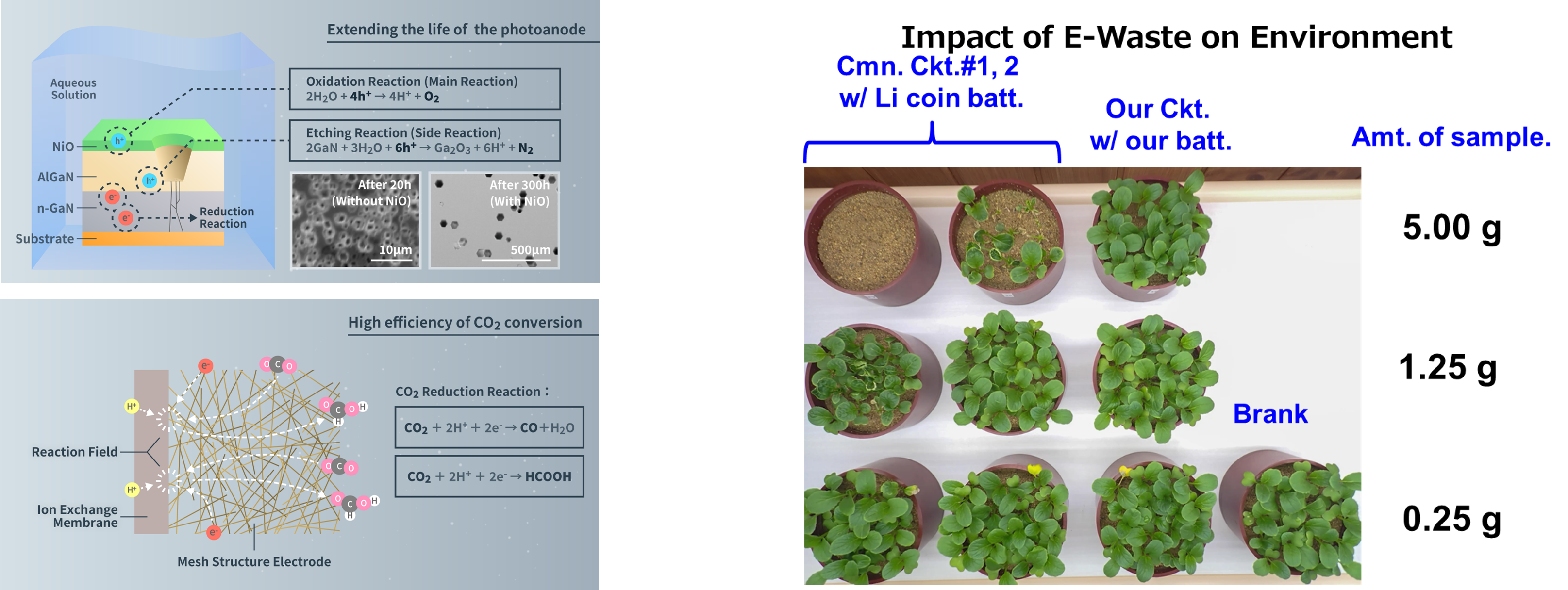Green Device Research Group
Research Group Introduction
In response to the various social issues related to the environment and energy, we are pursuing electrochemistry and materials (catalysis), which are key elements differentiating us from our competitors, as core technologies, and promoting efforts to utilize them for social implementation. Specifically, we are working on "Artificial Photosynthesis," which converts and fixes carbon dioxide by fusing different materials (semiconductors and catalysts), and "Resource Circulation Material Design," which utilizes surplus and abundant resources, for the design of devices, materials, and structures with high recyclability and low environmental impact. ・Artificial photosynthesis technology ・resource-circulating material desig

R & D results
【 Press Release 】
・October 7, 2022 NTT and the University of Tokyo Produce the World's First Communication Signal Generated from an Environmentally Friendly Circuit and Battery ・October 27, 2023 World's Longest Carbon Fixation in Artificial Photosynthesis Using Semiconductor Photocatalysts Achieving carbon fixation exceeding the annual carbon fixed by trees for 350 hours of continuous operation
Picked‑up Theme:Artificial photosynthesis technology / resource-circulating material design technologies
・Technology
Artificial photosynthesis is performed using an oxidation electrode (semiconductor photocatalyst) and a reduction electrode (inorganic catalyst). The oxidation electrode is placed in an aqueous solution, and sunlight is irradiated onto the semiconductor photocatalyst (gallium nitride: GaN), generating holes (h+) and electrons (e-). Water is oxidized by the h+ on the electrode surface, generating O2 and H+ (water oxidation reaction). The reduction electrode is a composite of a proton exchange membrane that only passes H+ and an inorganic catalyst (Au). The e- generated at the oxidation electrode reacts with H+ and CO2 in the gas on the reduction electrode, reducing CO2 to generate carbon monoxide (CO) and formic acid (HCOOH) (CO2 reduction reaction). The reaction at these electrodes, makes it possible to use solar energy to convert CO2 in the atmospheric environment. In addition, as part of our resource-circulating material design technologies, we have applied the knowledge we have cultivated about battery materials and electrochemistry to establish a technology for creating batteries that are made only from materials that do not contain precious metals or chemical substances that may have an adverse effect on humans, animals, and plants via the environment, and that do not impact the natural environment even if they are abandoned in nature.

・Features
In addition to the target reaction, namely, the oxidation reaction of water , an etching reaction occurs in which GaN is oxidized to Ga2O3, which is an issue with oxidation electrodes. GaN is chemically stable and does not dissolve in common acids or bases, but Ga2O3 is soluble in acids and bases, so the change of GaN to Ga2O3 due to the etching reaction is a major factor in electrode deterioration. To address this issue, we considered the use of a protective film that prevents water from penetrating the GaN surface, has h+ transport ability, and can transmit light . We focused on NiO, which is known to have high hole transport ability. By densely forming a thin film of several nm that does not impair light transparency and prevents water from penetrating, we were able to significantly improve the lifespan. In the conventional reduction electrode, an electrode was placed in an aqueous solution to convert the dissolved CO2 in the solution, but in order to convert more CO2, we considered converting it as a gas. We therefore created a composite electrode in which Au, which is meshed to allow gas to pass easily and maintain an electronic conduction path, is pressed onto a proton exchange membrane that allows H+ to pass, and succeeded in significantly increasing the amount of CO2 converted. We also confirmed through a corrosive test that the low-environmental-impact battery can functions as a primary battery and has less impact on soil and plants than commercially available lithium coin batteries.

・Application
Carbon fixation is possible by manufacturing chemical products carbon compounds generated by reducing CO2 through artificial photosynthesis. In addition, carbon circulation (carbon recycling) is possible by using it as energy and reducing the emitted CO2 again through artificial photosynthesis. If we can achieve an artificial photosynthesis system that can convert solar energy more efficiently into electrical energy and continue to reduce CO2 over many years, it will greatly contribute to reducing CO2, which is a major causes of global warming. In addition, devices made only of materials with low environmental impact can be disposed of as general waste without separation, and devices that have little impact on the natural environment or living things even if abandoned in nature can be achieved.
